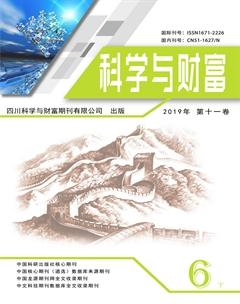Comparison of E—commercial Model Of Alibaba and Amazon
1. Introduction
With the prosperous development of the internet, e-commerce is increasingly popular all over the world, and online shopping has been the main stream among youngsters. The electronic commerce, or e-commerce, marketplace continues to grow as more consumers prefer the convenience of purchasing goods online. A number of companies both large and small embrace the advantages of combining brick-and-mortar locations and supplemental Internet-based storefronts to meet the needs of the vast majority of consumers. Amazon and Alibaba each have distinct features as e-commerce companies, their core business models differ greatly. This paper will focus on several aspects to analyze differences between the two companies.
2. Business Model of Alibaba and Amazon
2.1 Amazon's Business Model
“Often touted as the largest online retailer in the world, Amazon operates under a business model with many moving parts. First and foremost, the company sells goods directly. A percentage of products are offered to buyers through Amazon's online storefront with a small markup, and inventory is kept in the company's large network of warehouses.” (Investopadia, 2016)
In addition to direct sales, Amazon provides a platform for other retailers to sell products to buyers. Products sold through Amazon's partner retailers are often less common items or those with a higher purchase price, allowing Amazon to avoid holding slow-moving inventory that could decrease profit. While Amazon does not charge a fee for its retailer partners to list items for sale, the company does retain a portion of the sales price as commission.
2.2 Alibaba's Business Model
“Just as Amazon is known to most American consumers as an e-commerce titan, China's e-commerce market is dominated by Alibaba.” (Investopadia, 2016). Though the company operates through a unique combination of business models, Alibaba's core business resembles that of Amazon. Alibaba acts as a middleman between buyers and sellers online and facilitates the sale of goods between the two parties through its extensive network of websites. The largest site, Taobao, operates as a fee-free marketplace where neither sellers nor buyers are assessed a fee for completing transactions. Rather, active sellers on Taobao pay to rank higher on the site's internal search engine, generating advertising revenue for Alibaba that resembles Google's core business model.
3. Comparison of Core Business between Alibaba and Amazon
As for e-business, Alibaba is still at an early stage. Although it has gained great success in China, it still needs a period of time to realize its transformation from a platform or retailer to a resource generator, which is of vital importance in the process of globalization.
“Amazon.com has managed to transform itself from an online bookstore to one of the world's key online shopping destinations.” (Emeraldinsight.com, 2012) Developing from a start‐up to one of the largest companies in the world in slightly more than a decade, it has entered the market of application solution providers, offers business solutions (warehousing distribution) and is among the top players in the cloud computing industry. The company represents the so‐called new economy yet it shares many characteristics with traditional companies.
Whats more, Amazon maintains a subscription-based business model through its Amazon Prime service as well as a small electronics product line. Under a Prime account, customers pay an annual fee to secure free two-day or same-day shipping on eligible items and have access to streaming media, such as digital music or movies. Amazon also generates revenue from selling its e-reader, the Kindle, and the e-book and mobile application purchases offered to Kindle owners.
At the same time, the majority of sellers utilizing the Taobao website are smaller merchants; which used to be Amazons main business, although now is the same. Alibaba also has a dedicated space for larger retailers. Tmall is the e-commerce site owned and operated by Alibaba that caters to well-known brands, including GaP.
Even though Tmall has a fraction of the number of active sellers listed on Taobao, Alibaba is able to generate revenue from deposits, annual user fees and sales commissions charged to retailers utilizing the site. All of those are functions of a platform rather than a resource integrater.
However, there is still something different. In addition to its e-commerce sites, Alibaba has emerged as a competitor in the Chinese financial system. To combat customer concerns over the security and validity of transactions completed online, Alibaba created Alipay. As a secure payment system, Alipay protects buyers in the event sellers are unable or refuse to deliver goods sold. In addition to its PayPal-like platform, Alibaba also generates revenue from its newly launched micro-lending business arm that caters to individual borrowers, which consists of the innovation income to a great extent.
4. Conclusion
Amazon is a massive retailer for both new and used goods, conversely, Amazon is a master of logistics and supply chain management, and it is the world leader in cloud infrastructure services. Its Kindle Fire devices rely heavily on its vast catalog of music and movies and its shipping services as well as its cloud infrastructure. And Alibaba operates as a middleman between buyers and sellers. Both Amazon and Alibaba have built e-commerce platforms uniquely suited to their home markets. Alibaba has deep understanding of Chinese consumers and nuances in terms of tone, approach, and product variety. The company has mastered the intricacies of Chinese regulations and how to work with state and national governments.
However, Alibaba is still at an early stage. Although it has gained great success all over the world, it still needs a period of time to realize its transformation from a platform or retailer to a resource generator, which is of vital importance in the process of globalization. As for Amazon, it needs more innovation to stimulate its potential of further development.
作者簡介:
林小叶(1998-),女,四川省达州市人,汉族,在读本科生。研究方向:跨文化交际。

